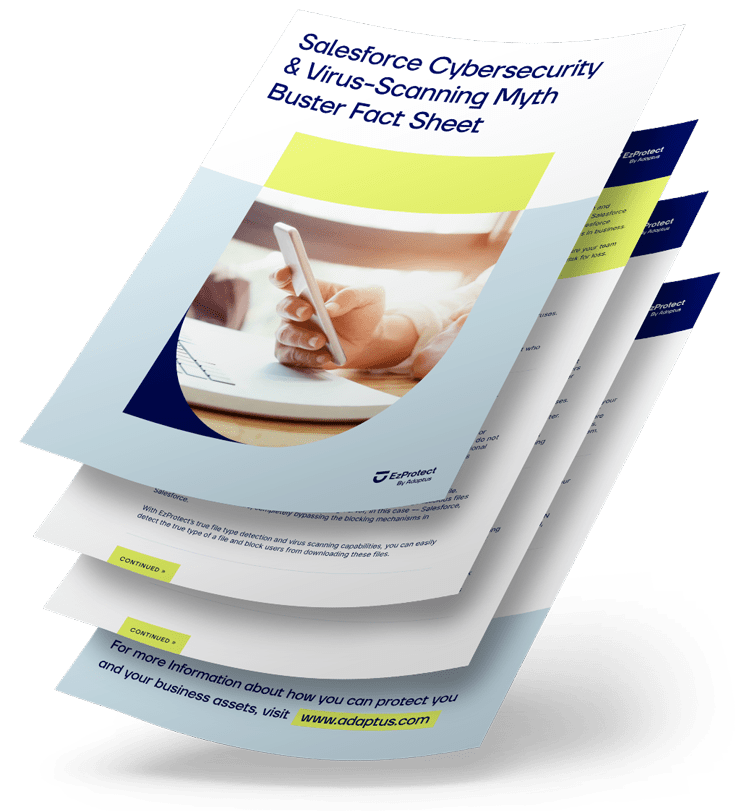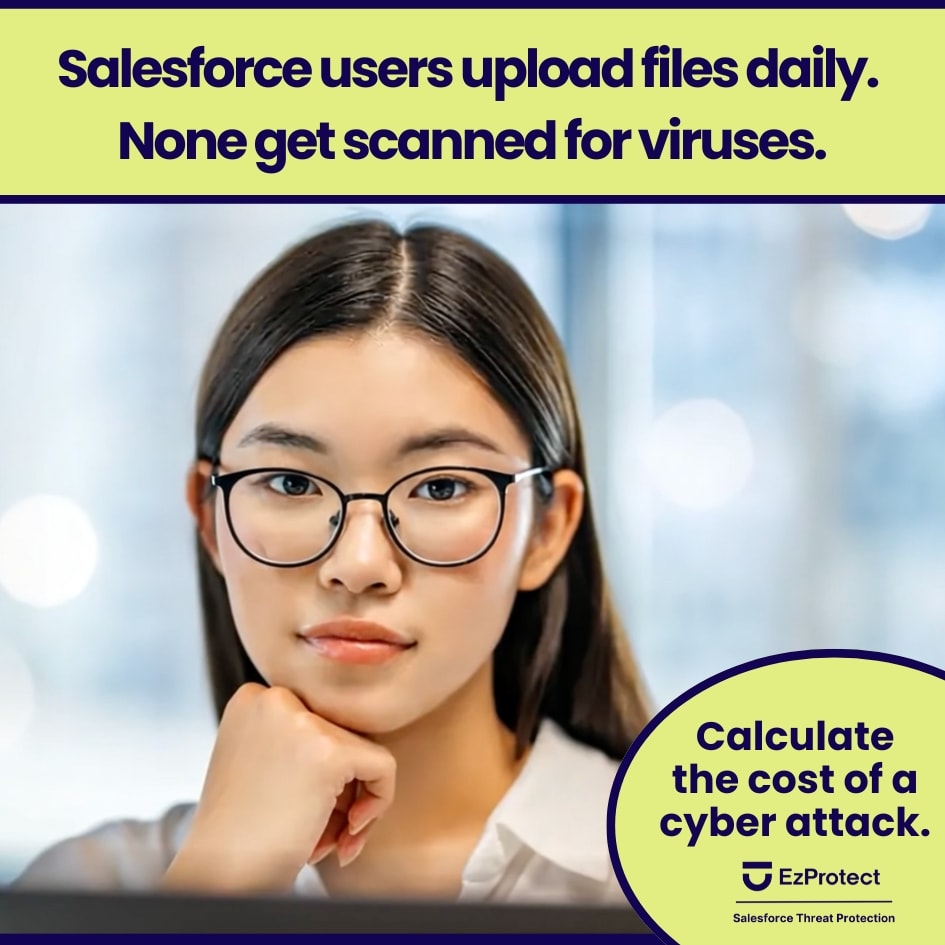Share
Imagine walking into your office tomorrow morning to discover that hackers have stolen 23 million customer records from your Salesforce system using nothing more than compromised login credentials.
This isn’t hypothetical. This is exactly what happened to Coca-Cola Europacific Partners in May 2025, and it’s part of a growing trend of Salesforce customers being hacked.
As a CEO, CoFounder of EzProtect and Salesforce Certified Technical Architect, I’ve seen the devastating consequences when security becomes an afterthought. The Coca-Cola breach isn’t just another headline—it’s part of a disturbing pattern affecting the entire Salesforce ecosystem.
Disney suffered a similar fate when an employee downloaded a malicious AI art tool that stole credentials, leading to 1.1 terabytes of data being exfiltrated. Across industries—healthcare, financial services, retail—we’re seeing major Salesforce customers fall victim to the same attack vector: stolen credentials.
Here’s the uncomfortable truth: no organization is immune from cyber attacks, and attackers are systematically targeting Salesforce environments because they know these systems house the most valuable business data. Many Salesforce orgs are insecure by design, implemented by consultants who have prioritized speed over security.
If you’re thinking “it won’t happen to us,” you’re not alone—and you’re not safe.
What Happened: The Anatomy of a Massive Breach
In May 2025, Coca-Cola Europacific Partners (CCEP) – the world’s largest Coca-Cola bottling company operating across 29 countries – fell victim to one of the year’s most significant corporate breaches. The scale is staggering: 23,083,391 customer and internal records were allegedly exfiltrated by cybercriminal groups.
This wasn’t a single attack, but rather a coordinated assault by multiple threat actors:
- The Everest ransomware gang targeted Coca-Cola’s Middle East operations, specifically the Dubai office, exposing 959 employees’ personal data including visa scans, passport information, and salary details.
- The Gehenna hacking group (also known as ShinyHunters) claimed responsibility for breaching CCEP’s Salesforce environment, stealing over 23 million records dating back to 2016.
The compromised data included account details, sales cases, contact entries, customer service records, product information, customer addresses, phone numbers, order IDs, and internal summaries – essentially a treasure trove of business-critical information.
How It Happened: The Growing Threat Against Salesforce Customers
This attack represents a disturbing trend: attackers are systematically targeting Salesforce environments because they know these systems house the most valuable business data.
The breach vector was simple:
- Attackers gained legitimate Salesforce credentials through phishing or malware
- They accessed CCEP’s environment looking like authorized users
- They operated undetected, systematically mapping data
- They exfiltrated 23 million records without triggering alerts
The problem isn’t that Salesforce is insecure—it’s that you’re suffering from “brand security bias.” You assume that because it’s Salesforce, it must be secure. But here’s the reality: Salesforce is a powerful tool until you start using it. Then security becomes entirely your responsibility.
Your implementation is probably already compromised. With 204 days average detection time, attackers might be in your system right now while you’re reading this. Without proper monitoring, you have no idea what normal user behavior looks like, so you can’t detect anomalies.
The Shared Responsibility Model: What You Don’t Understand
Here’s what most executives get wrong: they think “shared responsibility” means “Salesforce does most of it, I do a little bit.” Wrong. Salesforce provides a powerful tool—you own everything else.
Salesforce provides: Infrastructure, basic platform capabilities. You own: Everything that matters—how you set it up, who accesses what, how data flows, integrations, permissions, monitoring
Your blind spots:
- Setup decisions: Every choice you make affects security
- Integration chaos: Every connected app expands your attack surface
- Permission creep: Users accumulate access they don’t need
- Monitoring gaps: You can’t detect threats you can’t see
- Backup delusion: Data export ≠ comprehensive backup
Both Disney and Coca-Cola happened because organizations failed to understand that once you implement Salesforce, its security is entirely in your hands. And 74% of breaches involve human elements—stolen credentials, privilege misuse, and employees who click malicious links.
The hard truth: if you haven’t studied Salesforce security fundamentals, you’re building on an insecure foundation.
The Business Impact: Your Career and Company Are at Risk
Let’s be brutally honest about what $4.88 million in breach costs means for your organization:
- If you’re a mid-size company, this could be 20-50% of your annual revenue
- If you’re a public company, expect stock price drops and shareholder lawsuits
- If you’re in healthcare/finance, add regulatory fines up to 4% of global revenue
- If you’re the IT leader, you’ll likely be fired—executives don’t survive major breaches
GDPR, CCPA, HIPAA aren’t just acronyms—they’re financial weapons regulators use against companies that don’t properly secure data. “Salesforce was supposed to handle security” is not a legal defense.
While you’re reading this, your competitors are potentially gaining market share from companies that got breached last quarter. Customer trust, once lost, takes years to rebuild.
Stop Thinking “It Won’t Happen to Us”
Do this now or face the consequences:
Immediate Actions:
- Audit who has “System Admin” access (hint: it’s probably too many people)
- Implement MFA everywhere—no exceptions, no “trusted networks”
- Deploy malware scanning for file uploads (Salesforce doesn’t do this)
- Monitor for unusual data access (if you can’t detect anomalies, you can’t stop breaches)
Strategic Reality Check:
- Assume you’re already compromised and investigate accordingly
- Create real incident response plans for cloud breaches (your current plan won’t work)
- Invest in backup solutions that actually work (data export doesn’t count)
- Test your security before attackers do it for you
The bottom line: Both Disney and Coca-Cola could have been prevented with proper security fundamentals. Thinking “it won’t happen to us” is not a strategy—it’s a career-ending mistake.
The Reality Check
No organization is immune from cyber attacks. Disney, Coca-Cola, and countless others fell victim to the same false belief: “Salesforce will handle security.”
Here’s what’s actually happening: While you assume Salesforce protects you, attackers are systematically targeting Salesforce environments because they know most orgs are insecure by design. Most implementations prioritize speed over security, leaving wide-open attack vectors.
The shared responsibility model isn’t failing—you’re failing to implement your side of it. Your choice: Take action now, or become the next cautionary tale in someone else’s LinkedIn article about Salesforce breaches.
Get Your Salesforce Security Assessment
Contact our EzProtect team today for a free security assessment that bridges the critical gaps in the shared responsibility model—including comprehensive scanning of files and static resources that Salesforce doesn’t provide. Our expert team will deliver a customized 3-step action plan to strengthen your security posture and prevent your organization from becoming tomorrow’s headline.
Share
Did you love this blog and wish there could be more?
It is our goal to keep you informed about everything you need to know about Salesforce security to keep your Salesforce data and company safe and secure by providing you with the highest quality of original content.
If this sounds good to you, then sign-up below to be one of the first to know when the next super awesome Salesforce security blog has been released.


